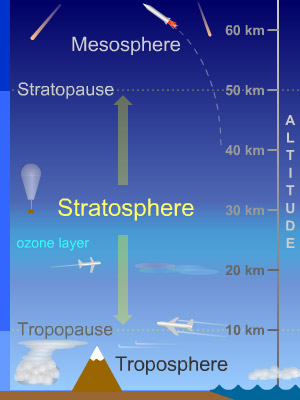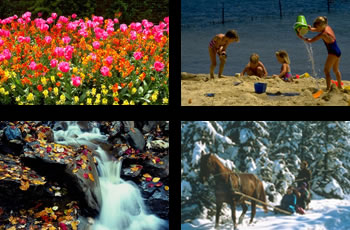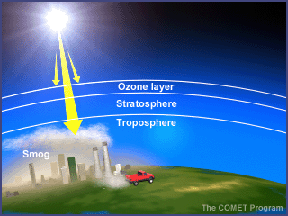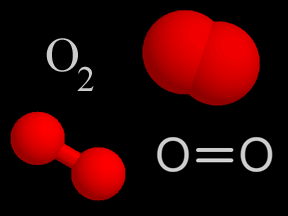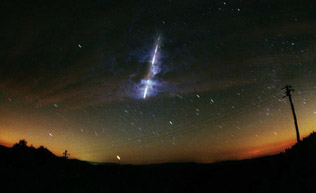Click on image for full size
Original artwork by Windows to the Universe staff (Randy Russell).
The Stratosphere
The stratosphere is a layer of Earth's atmosphere. The stratosphere is the second layer, as one moves upward from Earth's surface, of the atmosphere. The stratosphere is above the troposphere and below the mesosphere.
The top of the stratosphere occurs at 50 km (31 miles) altitude. The boundary between the stratosphere and the mesosphere above is called the stratopause. The altitude of the bottom of the stratosphere varies with latitude and with the seasons, occurring between about 8 and 16 km (5 and 10 miles, or 26,000 to 53,000 feet). The bottom of the stratosphere is around 16 km (10 miles or 53,000 feet) above Earth's surface near the equator, around 10 km (6 miles) at mid-latitudes, and around 8 km (5 miles) near the poles. It is slightly lower in winter at mid- and high-latitudes, and slightly higher in the summer. The boundary between the stratosphere and the troposphere below is called the tropopause.
Ozone, an unusual type of oxygen molecule that is relatively abundant in the stratosphere, heats this layer as it absorbs energy from incoming ultraviolet radiation from the Sun. Temperatures rise as one moves upward through the stratosphere. This is exactly the opposite of the behavior in the troposphere in which we live, where temperatures drop with increasing altitude. Because of this temperature stratification, there is little convection and mixing in the stratosphere, so the layers of air there are quite stable. Commercial jet aircraft fly in the lower stratosphere to avoid the turbulence which is common in the troposphere below.
The stratosphere is very dry; air there contains little water vapor. Because of this, few clouds are found in this layer; almost all clouds occur in the lower, more humid troposphere. Polar stratospheric clouds (PSCs) are the exception. PSCs appear in the lower stratosphere near the poles in winter. They are found at altitudes of 15 to 25 km (9.3 to 15.5 miles) and form only when temperatures at those heights dip below -78° C. They appear to help cause the formation of the infamous holes in the ozone layer by "encouraging" certain chemical reactions that destroy ozone. PSCs are also called nacreous clouds.
Air is roughly a thousand times thinner at the top of the stratosphere than it is at sea level. Because of this, jet aircraft and weather balloons reach their maximum operational altitudes within the stratosphere.
Due to the lack of vertical convection in the stratosphere, materials that get into the stratosphere can stay there for long times. Such is the case for the ozone-destroying chemicals called CFCs (chlorofluorocarbons). Large volcanic eruptions and major meteorite impacts can fling aerosol particles up into the stratosphere where they may linger for months or years, sometimes altering Earth's global climate. Rocket launches inject exhaust gases into the stratosphere, producing uncertain consequences.
Various types of waves and tides in the atmosphere influence the stratosphere. Some of these waves and tides carry energy from the troposphere upward into the stratosphere; others convey energy from the stratosphere up into the mesosphere. The waves and tides influence the flows of air in the stratosphere and can also cause regional heating of this layer of the atmosphere.
A rare type of electrical discharge, somewhat akin to lightning, occurs in the stratosphere. These "blue jets" appear above thunderstorms, and extend from the bottom of the stratosphere up to altitudes of 40 or 50 km (25 to 31 miles).


